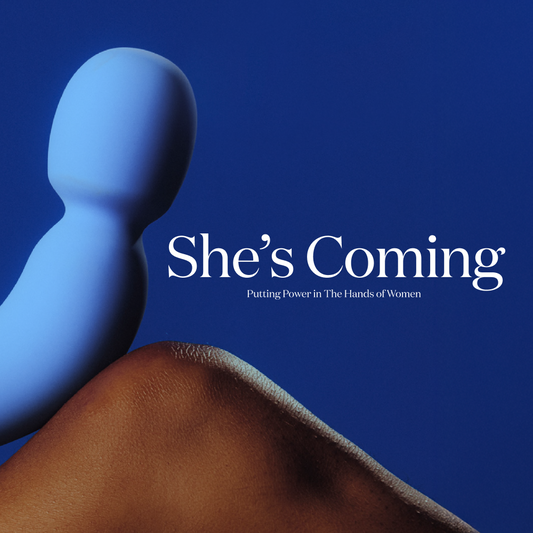TL;DR
- The Kinsey Scale, developed by Dr. Alfred Kinsey in the '40s and '50s, assigns each person a number between 0-6, with 0 being “exclusively heterosexual” and 6 being “exclusively homosexual.”
- In an era where LGBTQ+ people were extremely stigmatized, Dr. Kinsey changed the way we understand sexuality as a culture.
- While the Kinsey Scale was revolutionary when it first came out, our collective understanding of gender and sexuality has become more expansive in recent years.
Before the 1960s sexual revolution, the majority of Americans subscribed to puritanical nuclear family values. One of the most popular shows of the conservative 1950s was I Love Lucy. Its main characters, Lucy and Ricky Ricardo, slept in separate twin beds — even during Lucy’s pregnancy — so that American viewers wouldn’t think of the couple as sexual beings.
During this bleak sexual era, Drs. Alfred Kinsey, Wardell Pomeroy, and Clyde Martin made headlines for publishing a daring scientific study called Sexual Behavior of the Human Male, aka The Kinsey Reports, in 1948. In the study, the research team led by Dr. Kinsey interviewed 5,300 men over the course of 15 years. The Kinsey Reports found that 93% of men masturbated, half of married men had extramarital affairs, and 37% of men have had a homosexual experience at some point in their lives.
When the sequel Sexual Behavior of the Human Female was published in 1953, Americans learned that 62% of women masturbated, and about half of the women who participated in the studies had had premarital sex.
The Kinsey Scale changed how we think about sexual attraction.
Americans collectively lost their minds over these new sexual insights, which were presented in sterile, explicit scientific language that the average person was not used to. Additionally, Dr. Kinsey proposed the radical idea that there are shades of gray between homosexuality and heterosexuality by creating The Kinsey Scale. The Kinsey Scale assigns each person a number between 0-6, with 0 being “exclusively heterosexual” and 6 being “exclusively homosexual.”
By creating this scale, Dr. Kinsey proposed the idea that everybody can be a little bit gay from time to time. Values in the middle of the scale include 3, “equally heterosexual and homosexual,” and 5, “predominantly homosexual, only incidentally heterosexual.” “Kinsey found that a person’s sexual attraction can be fluid; that is, changes over time,” says Senior Scientist at the Kinsey Institute Dr. William Yarber.
“Further, he wanted to end the concept of homosexual and heterosexual identities and instead focus on sexual behaviors.” In a pre-Stonewall era where LGBTQ+ people were extremely stigmatized, Dr. Kinsey made groundbreaking findings that changed the way we understand sexuality as a culture.
Dr. Kinsey’s work normalized the fluidity of sexual attraction and same-sex attraction, while also validating the experiences of bisexual people who are attracted to both genders. Both books remained on the New York Times bestseller list for months. Additionally, speaking about sex on a scientific level empowered many people whose sexual attraction remained in the gray area of The Kinsey Scale.
The Kinsey Scale wasn’t perfect.
Even though the Kinsey Scale was revolutionary when it first came out, our collective understanding of gender and sexuality has become more expansive in recent years. First, the Kinsey Scale hinges on the male/female gender binary. We now know that more gender identities exist beyond the binary.
Second, the Kinsey Scale excludes asexual people who don’t feel sexual attraction toward others. While there is a designated value “X” on the original version of the scale, “X” only represents people who “have never had sexual relations,” which is completely different. Responding to both of these shortcomings, Dr. Yarber says that the Kinsey Institute has done extensive research on gender and sexuality, including the topic of graysexuality. He also shared that the Kinsey Scale has been modified up to 200 times, including asexuality to the scale.
Is the Kinsey Scale still relevant?
According to Dr. Yarber, it is. “the Kinsey Scale
Dr. Kinsey helped destigmatize extramarital affairs, premarital sex, masturbation, and fluid experimentation outside of heteronormative relationships. If a staggering percentage of people included in the Kinsey Reports were masturbating and having premarital sex, did they deserve to be shamed or outcasts in their social circles? Or was it society that needed to change to accommodate changing sexual attitudes of that time? Dr. Kinsey showed us that scholarly and scientific research was absolutely necessary.
Without the Kinsey Scale to pave the way, sex education would still be in the shadows. Thanks to Dr. Kinsey, we know that a healthy sex life is part of overall wellbeing.
Dr. Kinsey’s legacy lives on.
Dr. Kinsey’s radical ideas were inspired by his own life experiences. He was openly bi, and had an open relationship with his wife, Clara. Some sources even stated that he might have had secret affairs with fellow researchers, Drs. Pomeroy and Martin. After the wild success of the Kinsey Reports, he received funding to continue his research, but the 1950s Red Scare, which labeled anyone from the LGBTQ+ community as a potential communist, affected Dr. Kinsey’s ability to receive funding for his research projects.
Dr. Kinsey found unwavering support from Herman B. Wells, president of Indiana University, where The Kinsey Institute is headquartered today. Dr. Kinsey personally conducted 7,985 of the 18,000 sex histories that have been recorded by the research team. He had his sights set on a total of 100,000 interviews, but he died at the age of 62 before completing that goal. Today, The Kinsey Institute continues to provide sexual education and research materials for people who want to study human sexuality.




















































